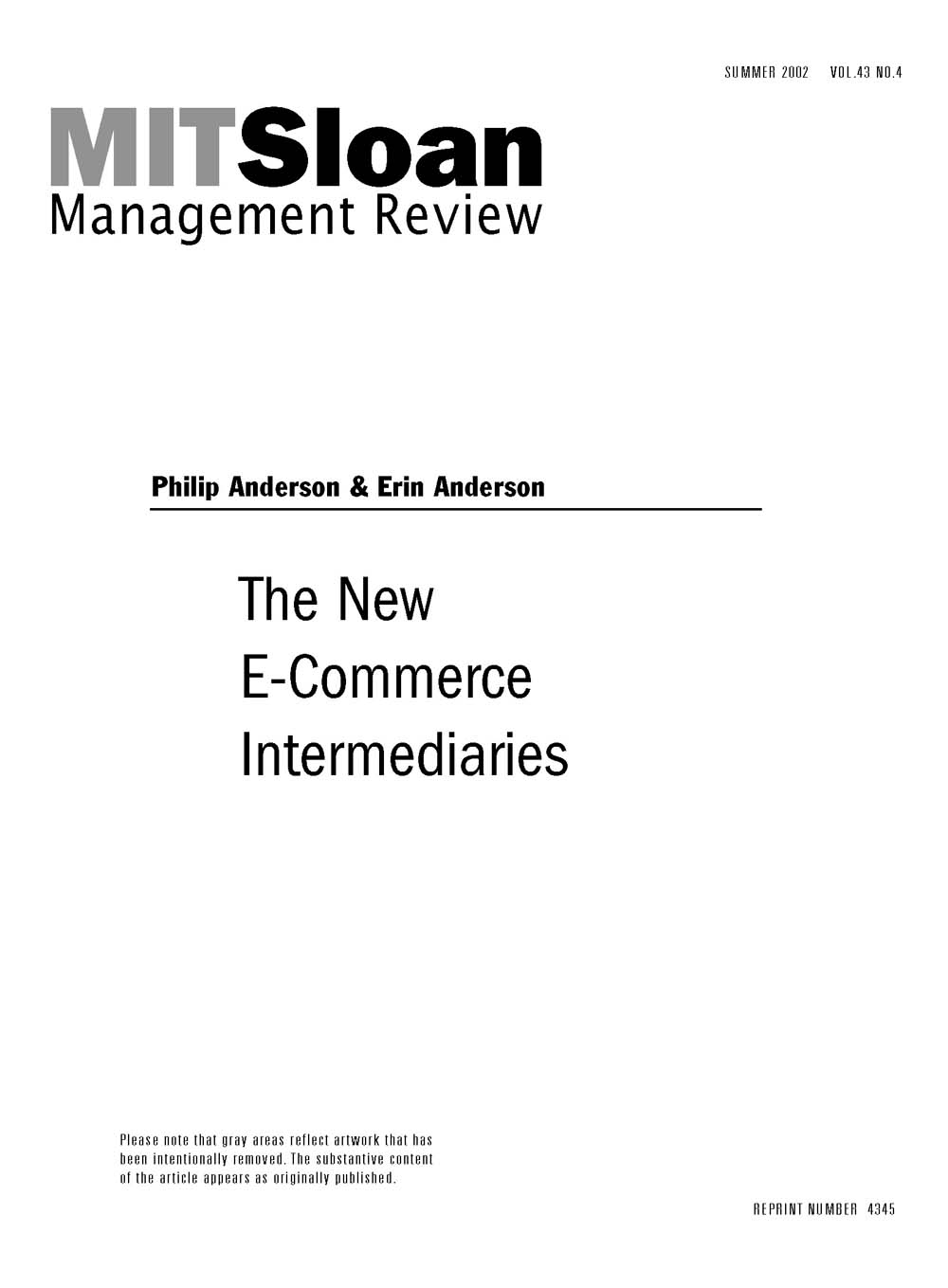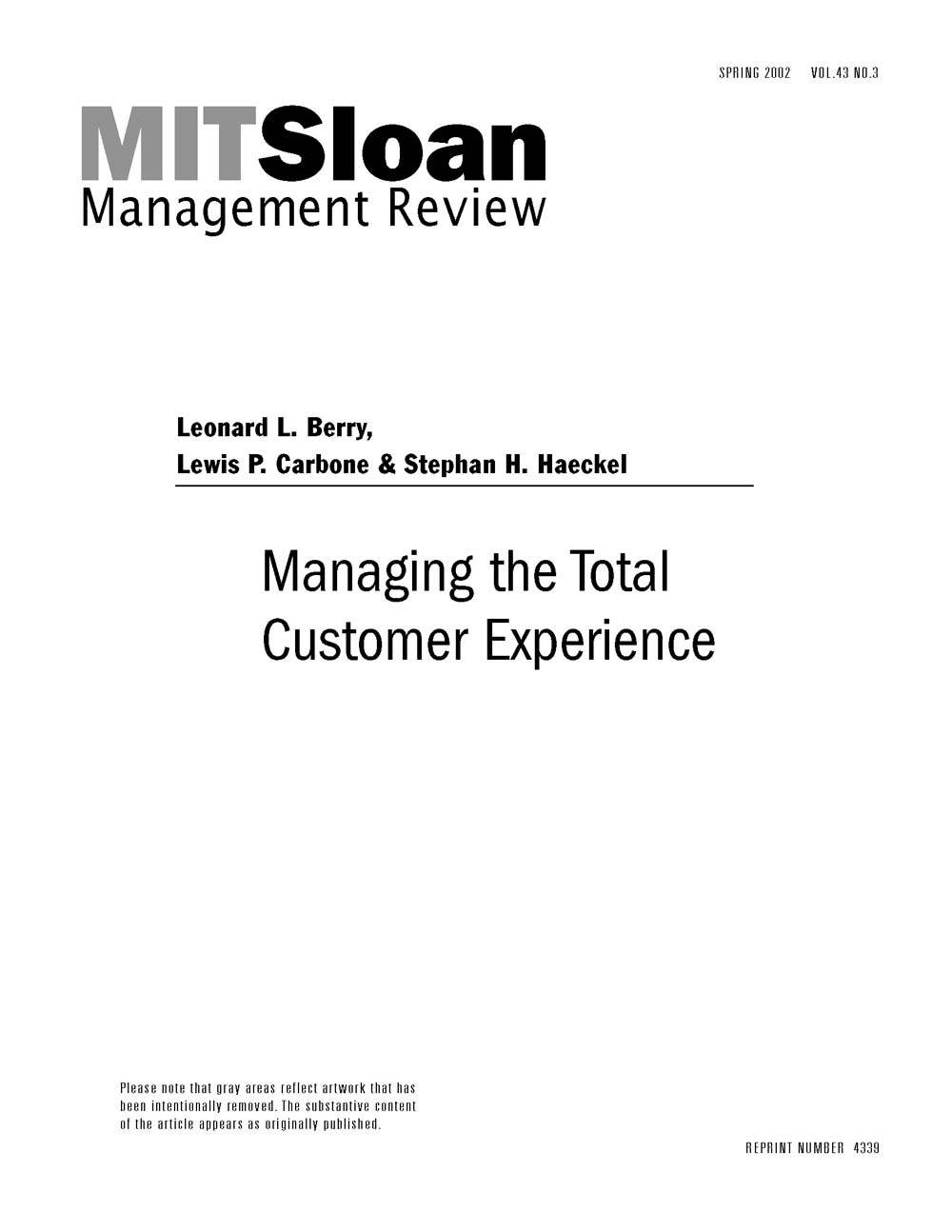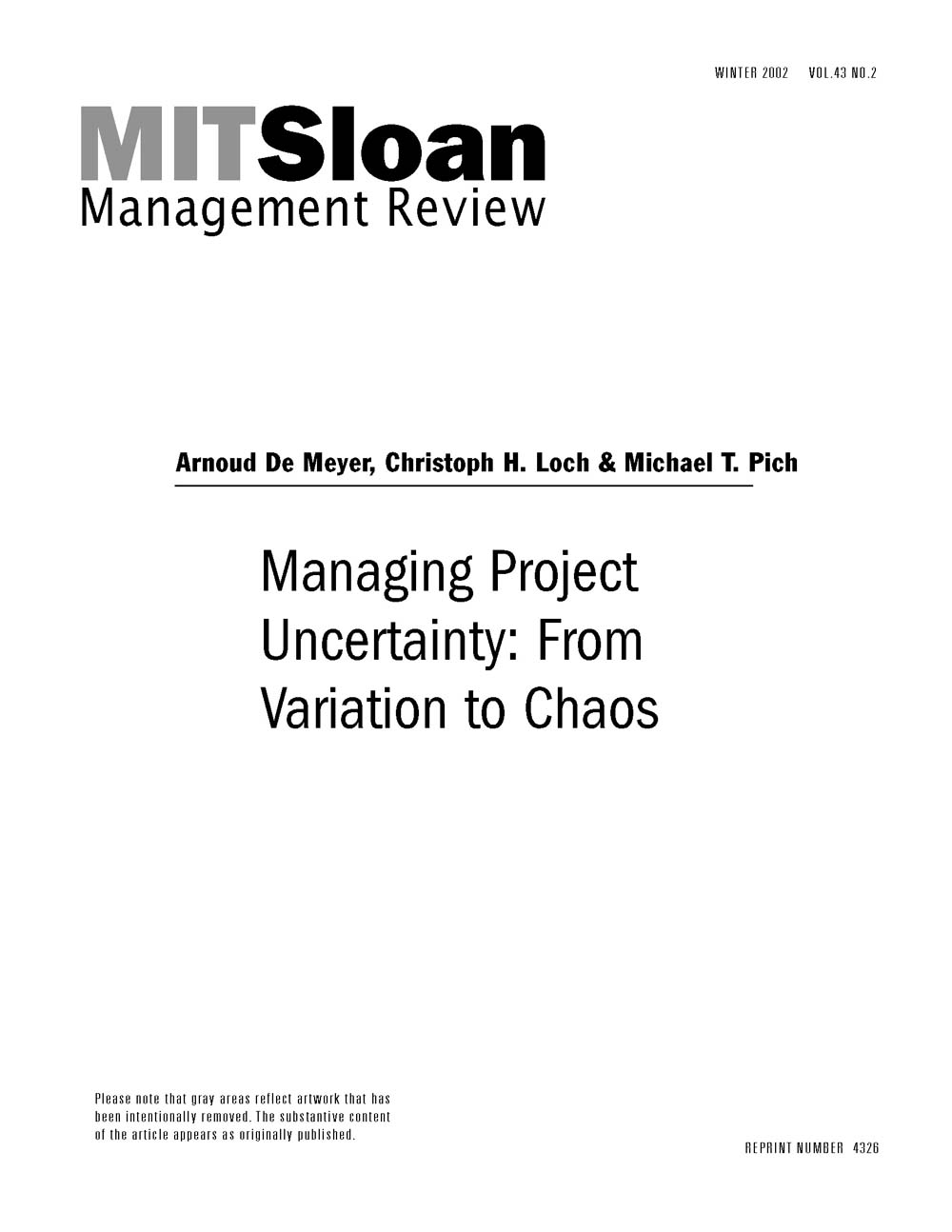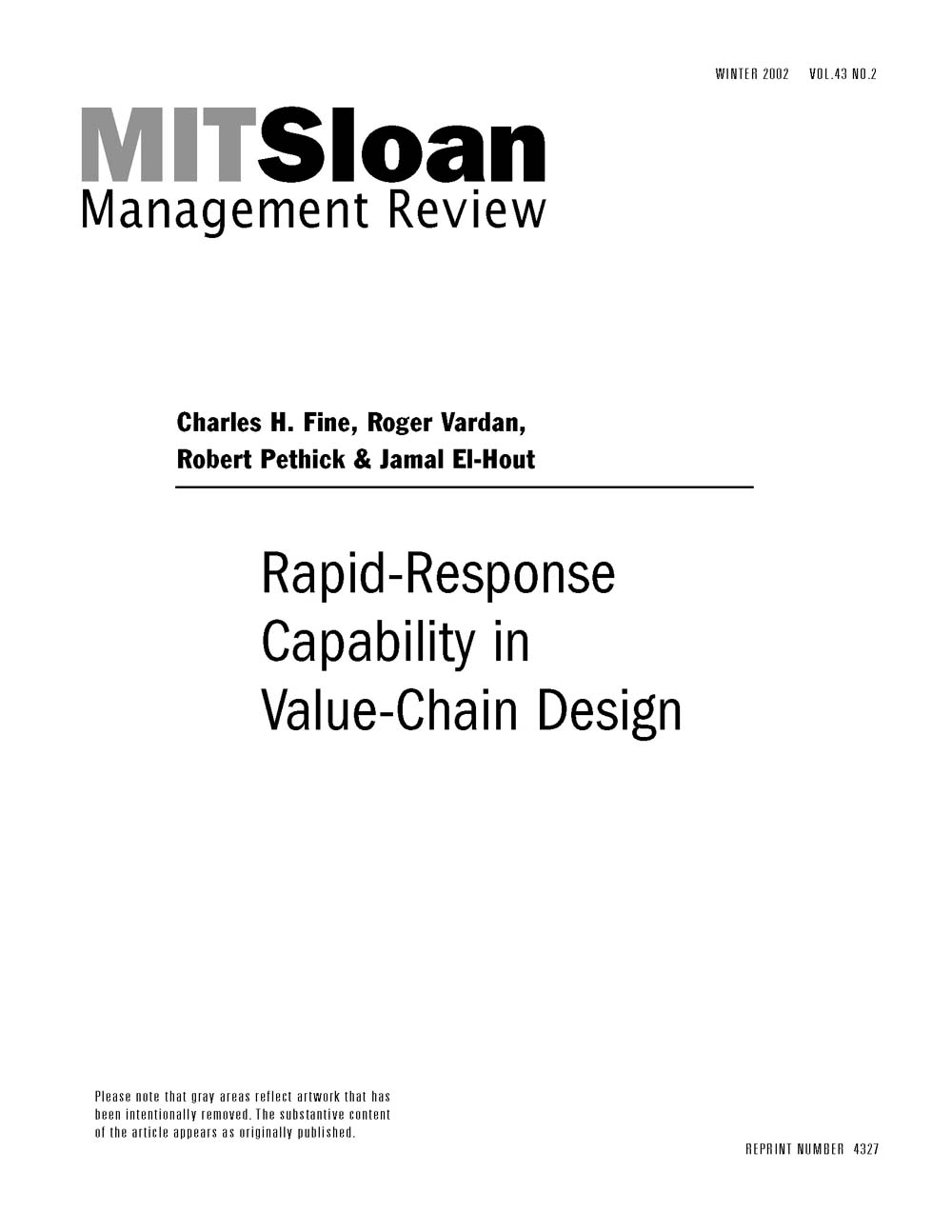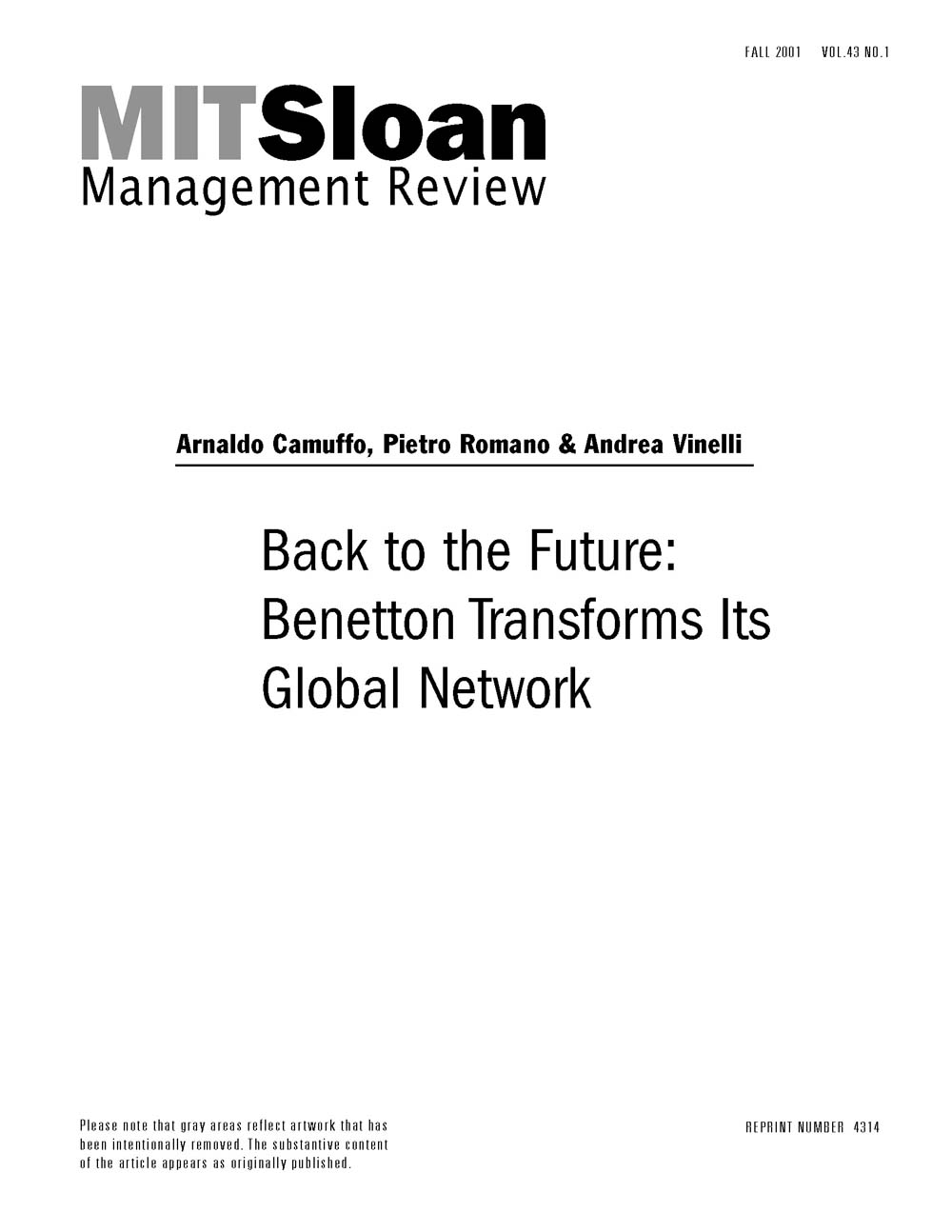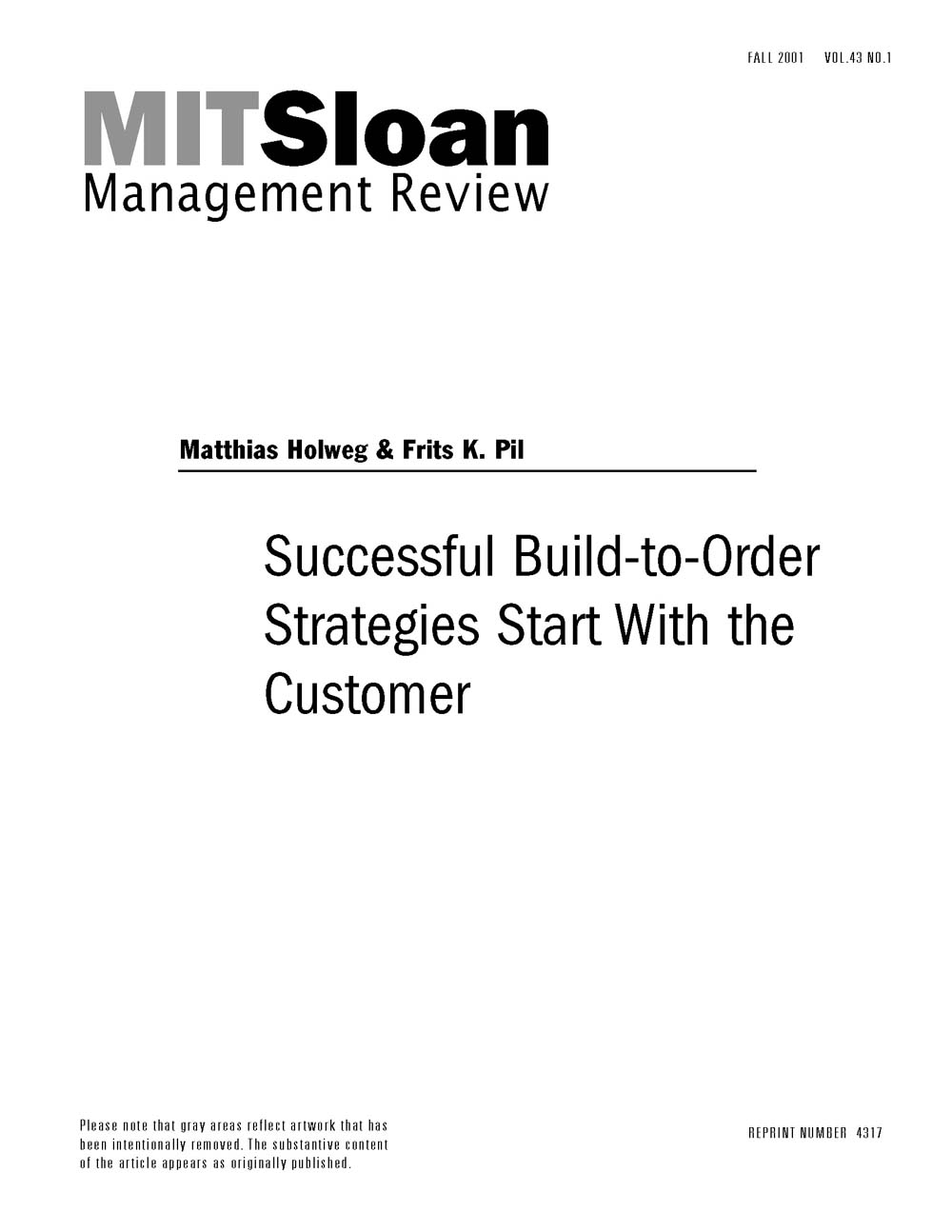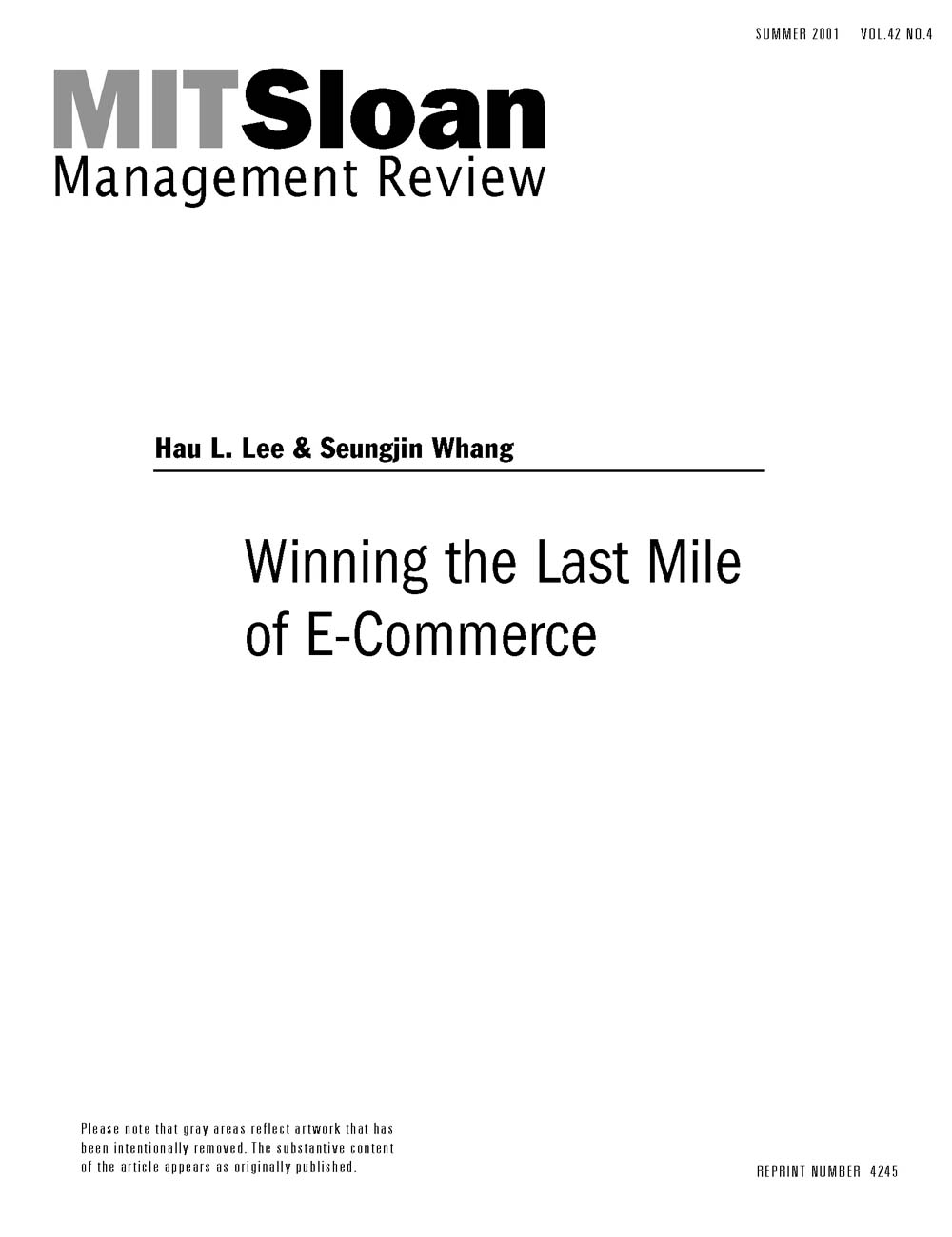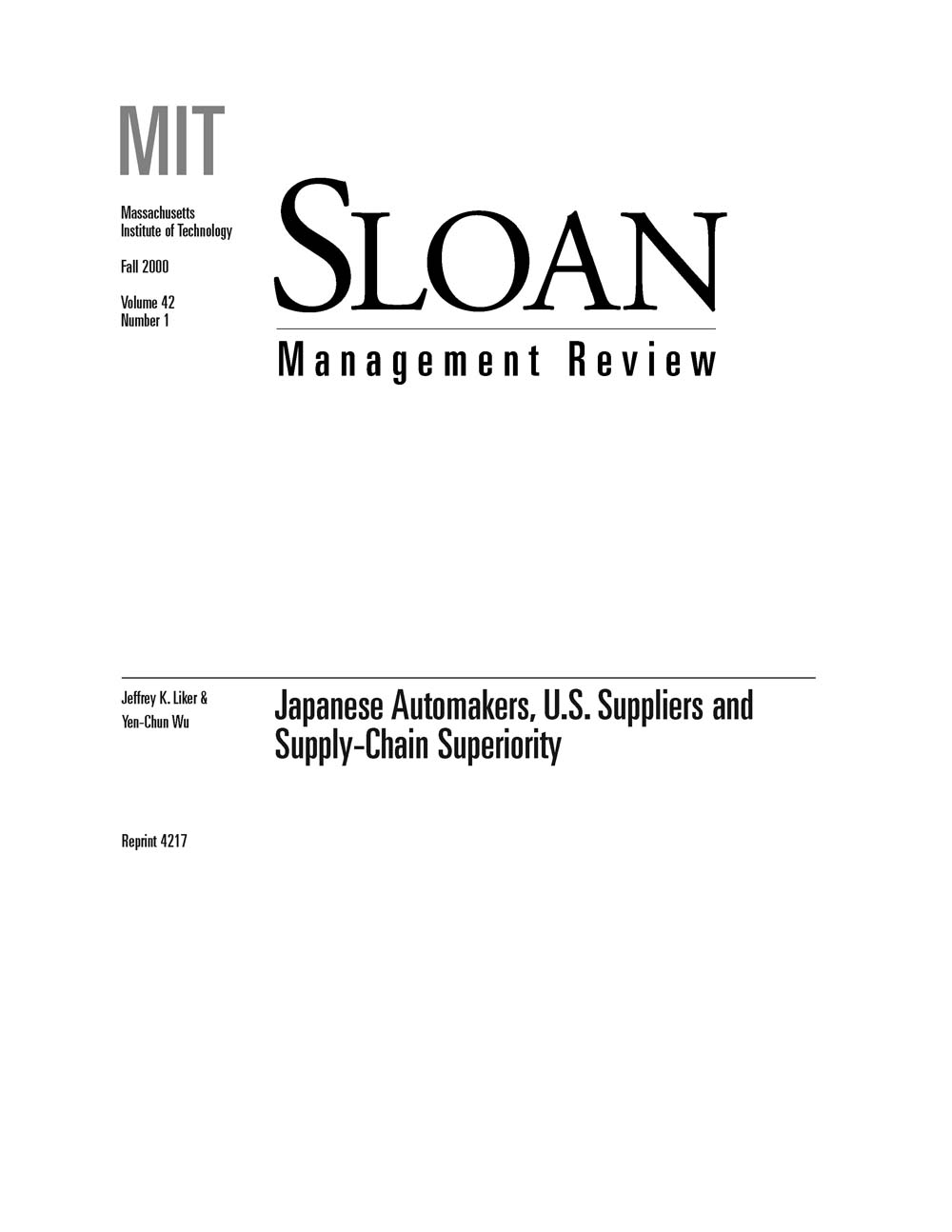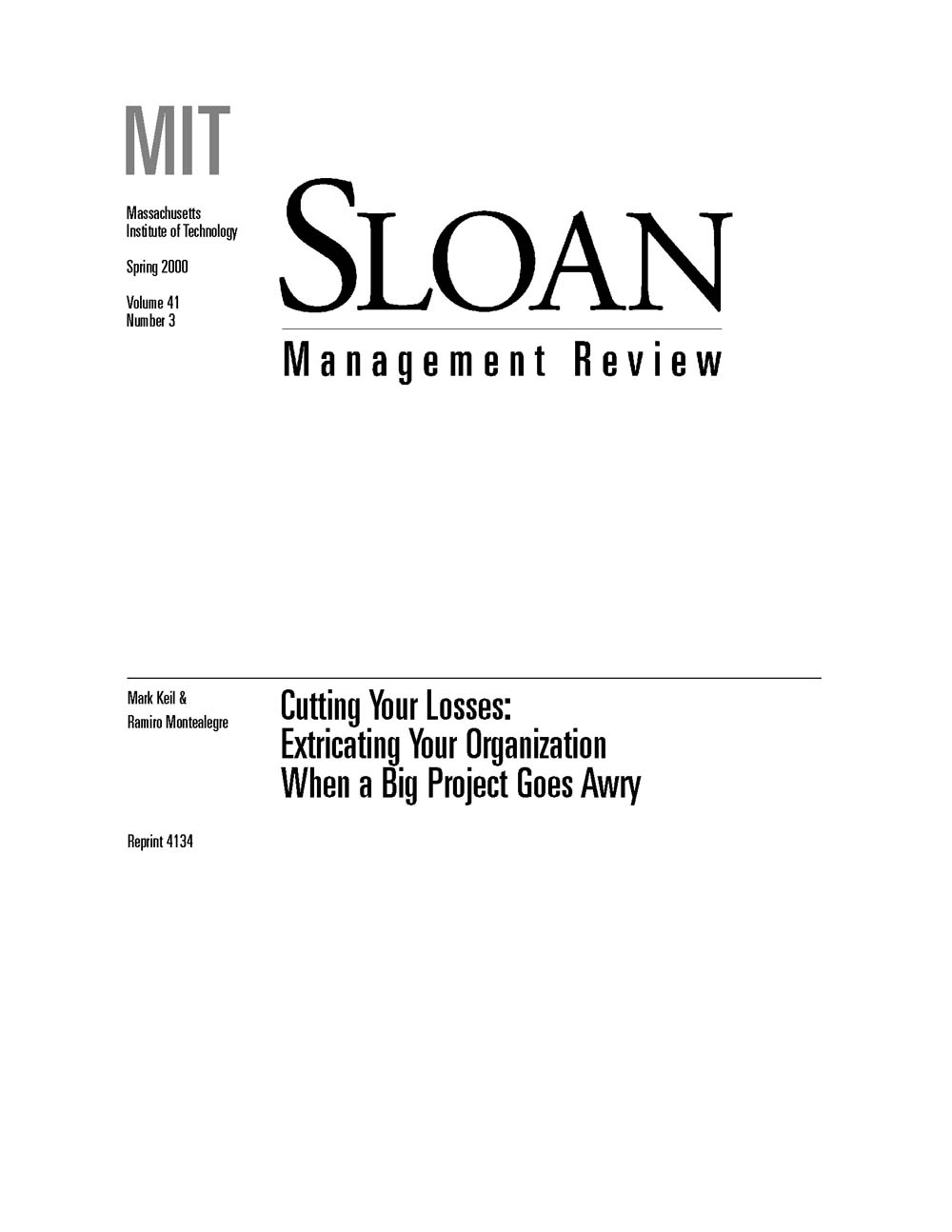When companies first plunged into e-commerce, they thought success meant cutting out middlemen. That approach didn’t work, in part because e-businesses misunderstood the role of intermediaries. Middlemen are not costly, necessary evils. They solve problems for customers and, in so doing, they enable sales and create value for producers. INSEAD’s Philip Anderson and Erin Anderson show how intermediaries are helping smart companies realize the promise of the Web. They explain intermediaries’ nine ways of adding value, suggesting that three will change, three will survive in a new form, and three (reducing uncertainty about quality, preserving customer anonymity and tailoring offerings to customer needs) present growth opportunities. Middlemen can co-opt the Internet by offering services that would be too difficult for individual producers to provide. However, the authors caution, intermediaries must be open to new ways of doing business with suppliers and vice versa. The Web transforms but does not eliminate the advantages of the middleman’s central lookout position. But what was once thought of as a straight distribution channel from supplier through middleman to customer is now more accurately described as a service hub. The player that takes the customer order & #8212; possibly a Web site & #8212; occupies the center and interacts with many partners. The authors specify appropriate, fair incentives (for example, because Ethan Allen has quasi-independent furniture stores that customers browse before buying directly from the manufacturer’s Web site, the company automatically gives the nearest retailer a 10% tip). And they describe service-hub management that will generate enough trust to permit producers to get closer to customers & #8212; indirectly.
Operations P. 4
Page 7 of 10
-
Managing the Total Customer Experience
Offering products or services alone is no longer enough: Organizations must provide their customers with satisfactory experiences. Competing on this dimension means orchestrating all the clues “that people detect in the buying process.”Customers always have an experience & #8212; good, bad or indifferent & #8212; whenever they purchase a product or service from a company. The quality of the experience lies in how effectively the company manages it, in all its facets and from beginning to end. Organizations that simply tweak design elements or focus on improving isolated pockets of the customer experience & #8212; by providing a quick hit of entertainment, for example & #8212; will be disappointed in the results. An organization’s first step toward managing the total customer experience is recognizing what the authors call clues: the signals or messages given off by everything that touches on the buying process. Clues can include the product itself (does it work as advertised?), the layout of a retail outlet (are the signs easy to follow?), the tone of voice of the salesperson (did he really mean it when he said, “Have a nice day”?), and so on. Organizations that orchestrate the sum total of all the clues can create an optimal experience for their patrons. Addressing the clues that speak to emotions is especially important. Emotional bonds between companies and customers are difficult for competitors to sever. The internalized meaning and value that the clues assume can create a deep-seated preference for a particular experience & #8212; and thus for one company’s product or service over another’s. The authors explain the tools that are available to help organizations rethink the signals they are sending to customers. They also show how the tools work in practice by presenting two case studies in which organizations dramatically improved their customers’ experiences.
-
Managing Project Uncertainty: From Variation to Chaos
Project managers can't predict the future, but accurately gauging the degree of uncertainty inherent in their projects can help them quickly adapt to it.
-
Process Management and the Future of Six Sigma
The quality initiative Six Sigma is sweeping the United States. Is it good for whatever ails your company? Consultant Michael Hammer thinks not. He warns that many business leaders, in their quest for operations-performance improvement, fail to distinguish its strengths from its weaknesses. Hammer presents a strategic, holistic approach & #8212; business-process management & #8212; in which Six Sigma is only one of many useful initiatives. If a business process, such as billing customers, is fundamentally defective, why use Six Sigma to improve the performance of it? Companies that Hammer calls process enterprises (Caterpillar, Johnson & ; Johnson, Merck, Progressive Casualty Insurance, Bombardier and IBM) have found more success redesigning whole processes. Certainly, Six Sigma’s ability to unearth root causes of problems is outstanding for narrow cost-saving improvements. But it deploys statistical analytic tools to uncover flaws in the execution of an existing process without asking whether the process itself is flawed. Six Sigma assumes that the existing design is fundamentally sound & #8212; a dangerous assumption. For peak performance, companies should position Six Sigma in the context of process management and assign process owners. When a problem is amenable to a Six-Sigma solution, the process owner convenes a project team. If deeper change is needed, then a process-redesign team is organized. Process owners ensure that all performance initiatives (Six Sigma, enterprise resource planning, balanced scorecard, customer-relationship management and so on) are integrated to support strategic goals. Fitting Six Sigma into the process-management framework allows organizations to enjoy Six Sigma’s benefits while keeping it away from areas where it doesn’t belong. Process enterprises already are reaping cost savings, accelerated new-product introduction, improvements in customer satisfaction and increases in profitability.
-
Rapid-Response Capability in Value-Chain Design
Regardless of industry, all companies are operating on ever faster evolutionary tracks and at ever greater risk. A company’s real core capability & #8212; perhaps its only sustainable one, say authors Fine, Vardan, Pethick and El-Hout & #8212; is its ability to continually redesign its value chain, reshuffling structural, technological, financial and human assets in order to find maximum, albeit temporary, competitive advantage. The ultimate goal of strategic value-chain analysis, say the authors, is building an organizational capability for fast response to rapidly evolving industry dynamics. To execute such an analysis, the authors developed a value-chain-strategy framework during a yearlong strategic assessment at the General Motors Powertrain organization. The framework seeks to answer four key questions: Where is value being created and what activities are not adding to overall enterprise value? What areas of the business should remain in-house versus being outsourced? Where should investments be made and how should they be leveraged? How can the value chain be organized to optimize existing and emerging alliances? To answer those questions, the authors employ not only traditional economic-value-added (EVA) analysis, but also their own strategic value assessment (SVA), which considers factors such as customer preferences, the rate of change of underlying technology, competitive position in the marketplace, depth of the supply base and the integral or modular nature of the asset. The wide applicability of the framework is illustrated in the authors’ discussion of IBM’s decision to outsource its first PC microprocessor to Intel, a consumer-products company’s decision to outsource the manufacture of a branded product, and the Recording Industry Association of America’s decision to quell rather than acquire Napster’s file-sharing capability.
-
Back to the Future: Benetton Transforms Its Global Network
During the 1980s, everybody marveled at Benetton, the Italian casual-wear company with a penchant for provocative advertising. The archetypal network organization, it used subcontractors and independent agents for production processes, distribution and retail. But recognizing that times change, Benetton decided on a new approach & #8212; in advance of external pressures. Without giving up the strongest aspects of its networked model, it is integrating and centralizing, instituting direct control over key processes throughout the supply chain. The company also is diversifying into sportswear, sports equipment and communications. Vertical integration has meant establishing state-of-the-art production poles in Benetton’s foreign locations. The Castrette pole, near its headquarters, decides what each of the foreign poles should produce (on the basis of the skills and experience of the local population), and the foreign poles contract out production tasks. Benetton also has increased its upstream vertical integration to exercise greater control over its supply of textiles and thread. At the retail end, the company is supplementing its network of small, independently owned shops with large, directly controlled megastores. To stay ahead of fashion’s ever-changing whims, Benetton is streamlining its brands and collections, supplementing two basic collections with smaller, flash collections. In its recently acquired sports businesses, Benetton has invested in high-tech systems for designing sports equipment and has brought together designers from around the world for creative cross-fertilization. It has also reorganized its production processes and improved its retail network by establishing Benetton “corners” in the large sports shops of major distribution chains. In the field of communications, Benetton’s Fabrica workshop has produced award-winning films, and its new company, United Web, hopes to take advantage of the possibilities of e-commerce. Benetton knows that innovative businesses must pay attention to how knowledge is divided among producers, suppliers and retailers. Its new directions represent a major discontinuity from its past and divergence from industry practices.
-
Successful Build-to-Order Strategies Start With the Customer
All companies would like to offer custom products that delight their customers. For many, the challenges seem overwhelming, and they settle for manufacturing standard products in bulk, guided by long-term forecasts. Because demand is rarely forecast correctly, companies miss potential sales and must pay to store and manage excess product. In an effort to purge inventory, they offer discounts and other incentives. Profits erode, and the companies lose sight of what customers really want. Some companies attempt to offset those effects by optimizing pieces of the value chain. They create island solutions, such as lean factories, believing that such initiatives will make them more responsive. The authors argue that those efforts ultimately fail because they are not customer- centered. Citing results from their research, sponsored by the 3DayCar Programme at Cardiff Business School in Wales and the International Motor Vehicle Program at MIT, they show that island solutions sometimes backfire because they degrade other parts of the value chain. Instead, they urge companies to aim for a true build-to-order strategy, in which managers systematically improve the value chain’s flexibility in three areas: process, product and volume. Because the emphasis at each stage is on how to meet customer demands efficiently, optimization becomes more holistic and ultimately more profitable. To improve process flexibility, companies can link customer requirements directly to production, synchronizing customer-oriented production schedules in real time with suppliers. To improve product flexibility, they can push customization closer to the customer and can use common support structures to reduce the impact of product variety. To improve volume flexibility, the authors suggest ways companies can reduce reliance on full capacity or use differentiated pricing to reward customers for ordering products well in advance. The authors urge managers not to settle for halfhearted transitions to build to order. They recommend two critical first steps: First, understand key aspects of customer demand; second, adjust all processes accordingly. Only then can companies truly implement responsiveness across the value chain.
-
Winning the Last Mile of E-Commerce
Which e-businesses will prevail? New research on e-fulfillment may hold the key. After all, getting a customer’s online order is not enough: E-businesses also must show that they can deliver products quickly and efficiently. Hau L. Lee and Seungjin Whang, professors of operations, information and technology at Stanford University’s Graduate School of Business, have studied a few successful online companies and their innovative ways of applying order-fulfillment strategies. Although the principles are not new, Internet technologies enable them to be applied in new and expanded ways. The two core concepts for improving e-fulfillment efficiency are making more use of information flows instead of physical product flows and capitalizing on existing pipelines and infrastructures. Those concepts underlie five key e-fulfillment strategies: logistics postponement, dematerialization, resource exchange, leveraged shipments and clicks-and-mortar. Whether the strategy expands on time-tested models or is a breakthrough, the trick is to determine the best one for a given situation. A computer company might use logistics postponement. By capturing more-accurate information, it could assemble final goods on demand and thereby save money by postponing delivery decisions until after receiving the final word on what the customer wants. Other companies might use dematerialization, converting physical products into information flows, just as a music CD can be converted to MP3 format or Egreetings.com substitutes digital flows for paper greeting cards sent by regular mail. With resource exchange, an e-company that needs to move a load from Hong Kong to San Francisco might borrow a ship from another company that needs a cost-effective way to return its empty vessel to California. Webvan uses the leveraged-shipment strategy, making the most of existing networks. With its clicks-and-mortar model, CVS covers the last mile by having customers pick up their online orders. Some online purchasers in Japan do the same: 7dream.com utilizes the ubiquitous 7-Eleven stores to enable a group of Japanese companies to do bulk deliveries. Pointing out ways that companies are extending e-fulfillment value beyond cost containment, the authors also demonstrate how secondary opportunities are taking companies beyond the last mile.
-
Japanese Automakers, U.S. Suppliers and Supply-Chain Superiority
U.S. automakers have followed the lead of Japanese-owned operations in the United States and are practicing lean manufacturing, which focuses on delivering the best product of the highest quality at the lowest cost on time every time. A key part of lean manufacturing is just-in-time (JIT) delivery -- getting the right part to the right place at the right time. For automakers to effectively practice a lean approach, it would seem critical that suppliers make the transition from traditional mass-production systems to lean systems internally and in their logistics practices. In fact, the logistics practices and internal management policies of the automakers -- in other words, of the customers themselves -- have an even more profound impact on the supplier's ability to respond with lean systems. So found the authors in an unprecedented study on the performance of U.S. suppliers to the automotive industry in North America. To compare the policies and practices of the Big Three automakers and the Japanese transplants, the authors surveyed supplier plants that made comparable products for both U.S. and Japanese customers. Their comprehensive data demonstrate the impact of customer policies on supply-chain management: U.S. suppliers perform at much higher levels when they are supplying Japanese automakers than when working with U.S. automakers. How did the Japanese transplants develop superior, lean supply chains in North America? They worked with their suppliers to develop lean capabilities. They leveled their own production schedules to avoid big spikes in demand, which enables suppliers to hold less inventory. They created a disciplined system of delivery "time windows" that designate when specific parts shipments are due. They developed lean transportation systems to handle mixed-load, small-lot deliveries. They encouraged suppliers to ship only what was needed by the assembly plant at a particular time. Most important, the Japanese operations understand that creating a lean supply chain requires a give-and-take partnership across all the links in the supply chain.
-
Cutting Your Losses: Extricating Your Organization When a Big Project Goes Awry
Executives can become so wedded to a project, technology or process that they continue with it even when it’s seriously course.



